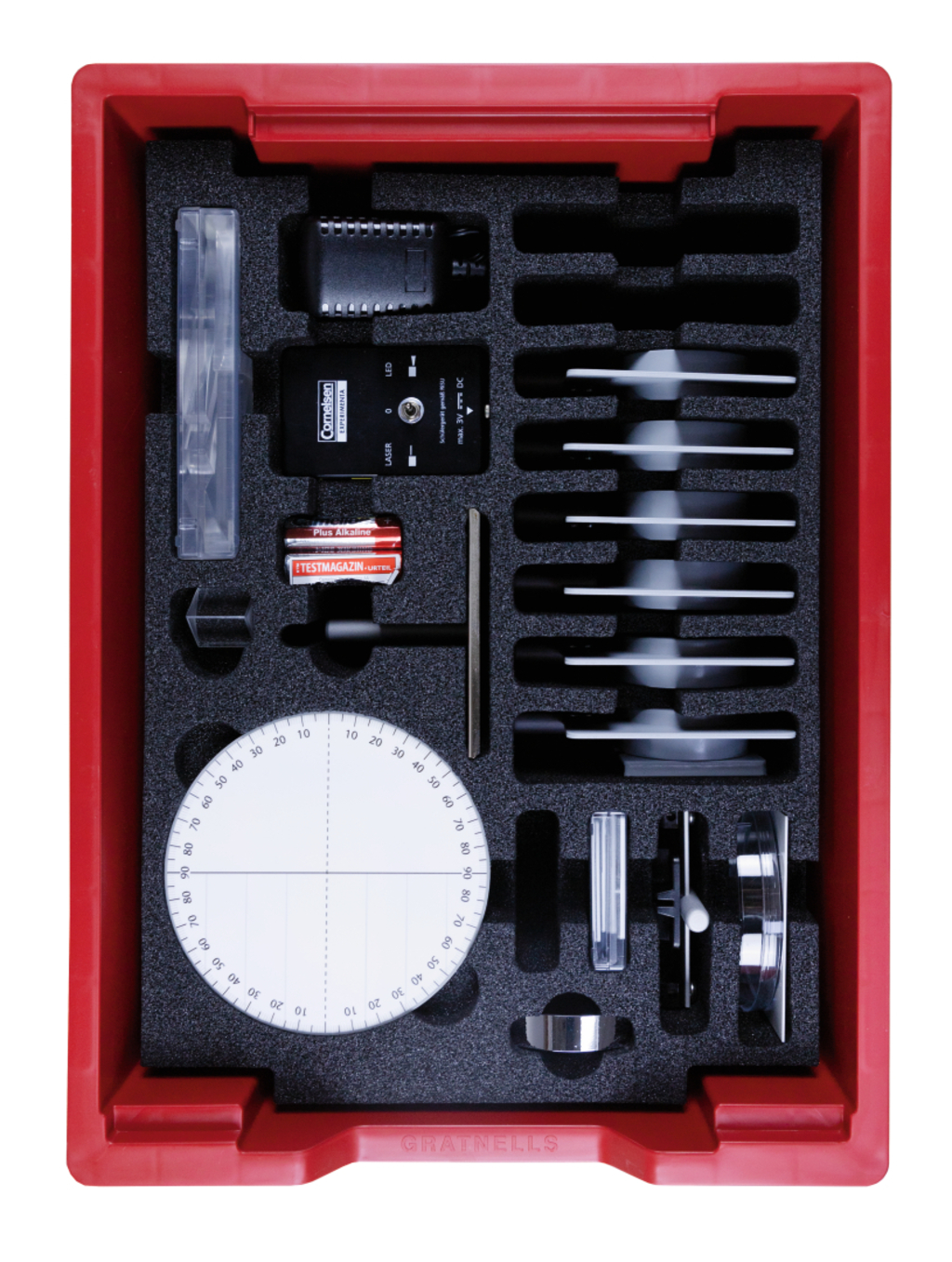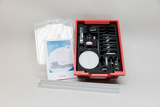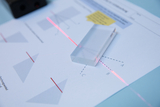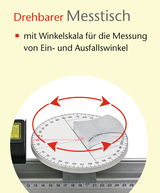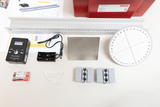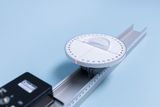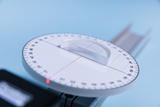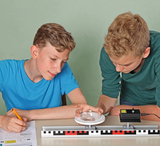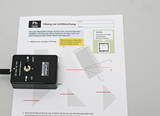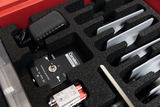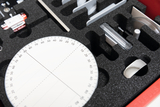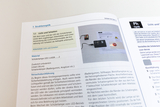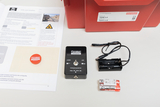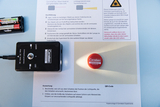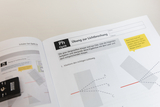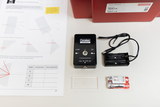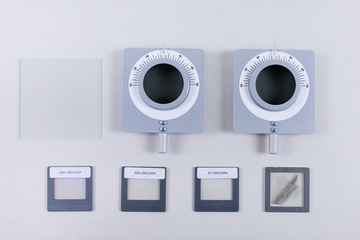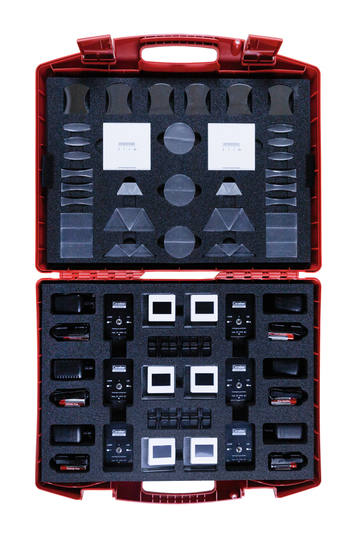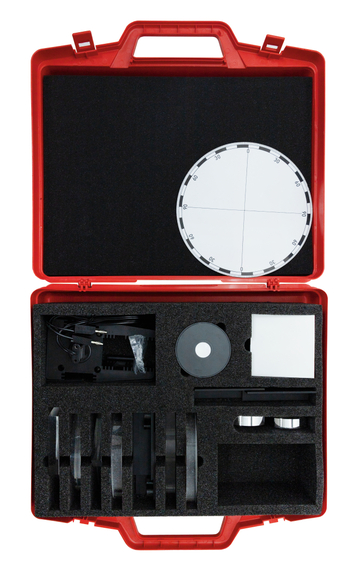Physics experiments on imaging optics
Optical set with optical bench for pupils
This kit covers the following basic laws of physics:
- Newton’s corpuscular theory of light
- Galileo’s telescope
- Kepler’s telescope
- Huygens–Fresnel principle
- Fermat’s principle
- Snell’s law
With the laser and the LED of the student lamp as well as the associated worksheet, the formation of shadows as a stitching optics is investigated.
The law of reflection is discovered with the laser of the student lamp on the measuring table.
The reflection of a parallel beam of light is reflected convex spherically, concavely spherically and concave parabolically on the surfaces. The test is carried out as a stitching optics.
The transition of light from air to glass is investigated. Snellius's law of refraction is discovered and the refractive index of air in glass is determined experimentally.
The transition of light from water to air is investigated. The refractive index of water and the limit angle of the total reflection are determined.
In two partial tests, the focal points of a cut-collecting lens with the stitching optics are first determined. The focal point of a lens on the optical bench is then measured.
Through a collecting lens (f=50mm) the formation of the centimeter scale printed on the screen is observed.
The optical device will be presented as part of a student lecture with experiment. In addition to the general functionality, the use of prisms is explained and the importance of magnification number and objective diameter is discussed.
The optical device will be presented as part of a student lecture with experiment. In addition to the general functionality, the function of the condenser is explained and the orientation of the projection is discussed.
The optical device will be presented as part of a student lecture with experiment. In addition to the general functionality, the function of the eyepiece and objective are explained and the magnification is discussed.
The light of the LED is broken down into its spectral colors with a prism. The test is carried out as stitching optics.
In this experiment, the principle of Fermat with a stitching optics is discovered.
The refraction of light in different bodies is constructed in a stitching optic and then controlled with the laser of the student lamp.
The beam paths through convex and concave lenses are examined as stitching optics.
The lens equation is derived from the imaging scale and experimentally confirmed with a scale slide.
The optical device will be presented as part of a student lecture with experiment. In addition to the general functionality, the function of the eyepiece and lens are explained and a comparison with the reflector telescope is made.
- 1 × Cross base
- 1 × Screen white with scale 90/90/1 mm
- 1 × Double dish, plastic with dividing strip
- 1 × Rail 500 mm
- 5 × Clamp slider
- 1 × Colour filters, primary red, green, blue
- 1 × Universal mirror
- 1 × Lens in frame, biconvex f=+50 mm w.short rod
- 1 × Lens in frame, biconvex f=+100 mm, w.short rod
- 1 × Lens in frame, biconvex f=+200 mm, w.short rod
- 1 × Lens in frame, biconcave f=-100 mm, w.short rod
- 1 × Prism, equilateral, 25x25 mm 3x60°
- 1 × Screen and mirror holder with short rod
- 1 × Scale in slite frame
- 1 × Ray optics models, set of 6 pcs.
- 1 × Acrylic glass rod
- 1 × Measuring table
- 1 × Aperture and slide holderwith short rod
- 1 × Optical lamp, students type, LED/LASER
- 1 × Table for optical lamp
- 1 × Set of 4 Mignon cells, alkaline, 1,5 V
- 1 × Power supply unit, clocked, 3 V/1 A DC
- 1 × Condenser without slideholder
- 1 × Batterie holder w.cable
- 1 × Carton for SEG (large tray)
- 1 × Plastic box, 140x50x25mm
- 1 × Storing tray, deep, red
- 1 × Lid for 75028 + 75038
- 1 × Foam insert for 43530
